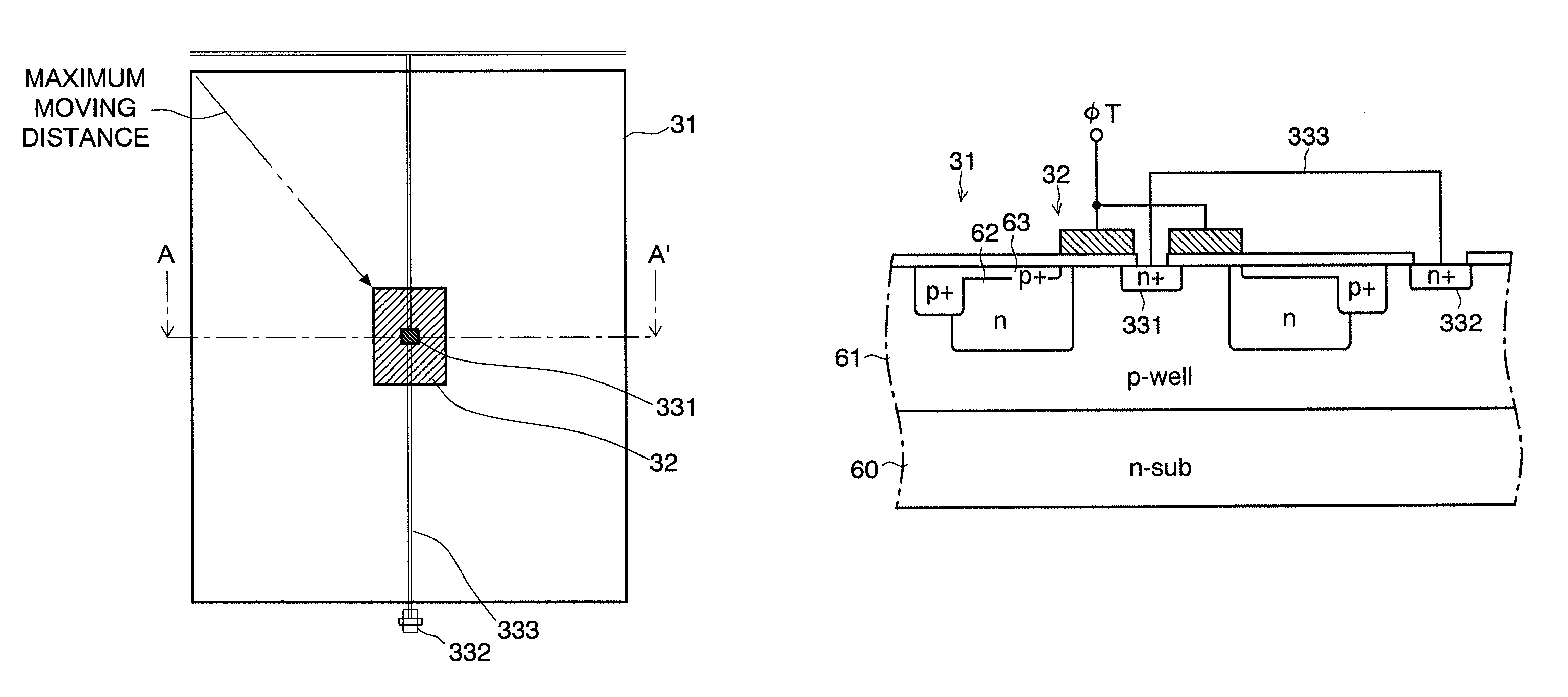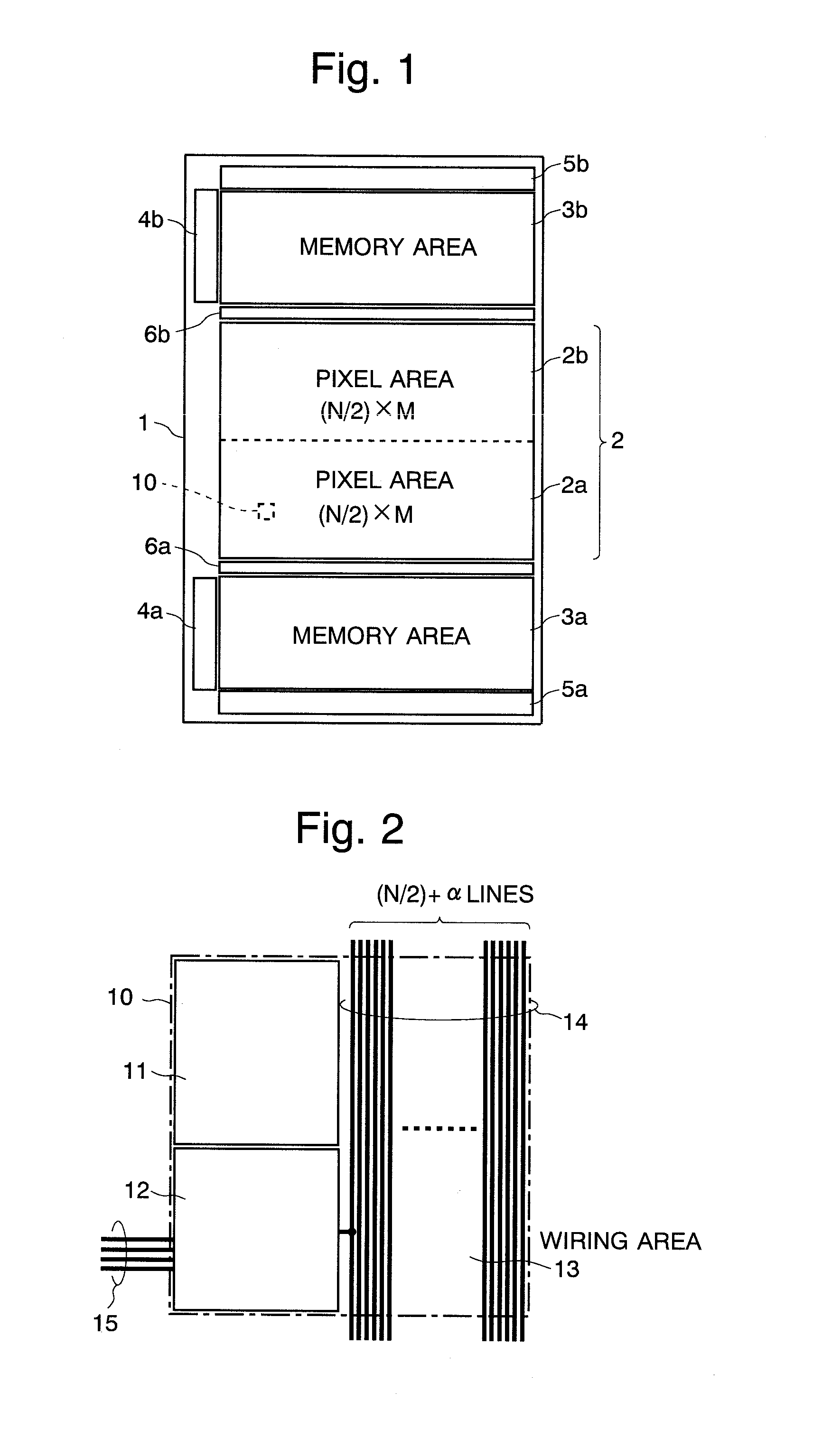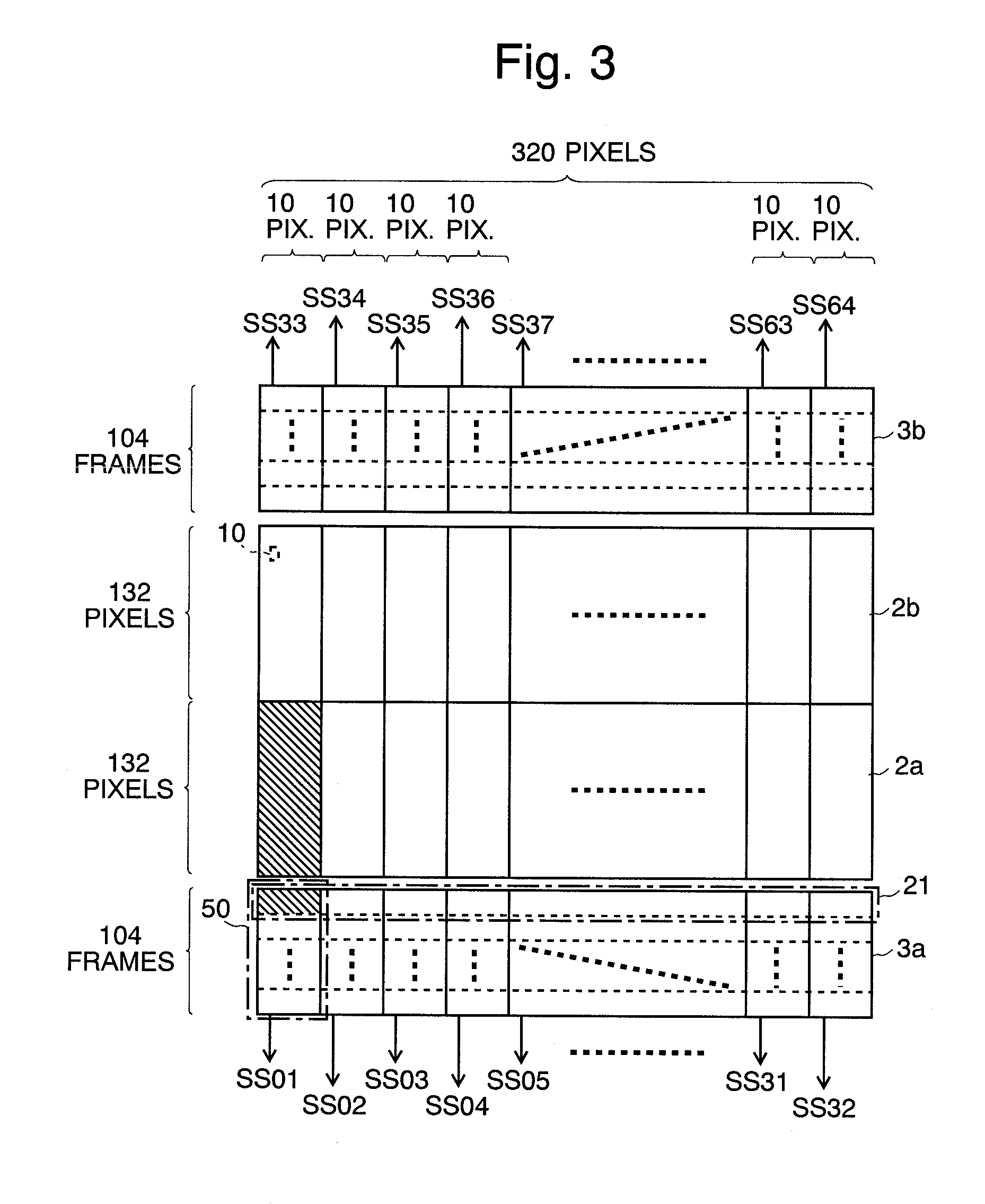Solid-state image sensor and method for producing the same
a solid-state image and sensor technology, applied in the field of solid-state image sensors, can solve the problems of short time in which the photodiode is exposed to light to obtain one frame of pixel signals, the portion of the charge cannot reach the floating diffusion within the predetermined short photoelectric conversion, and the time required for the photocharge produced by the photodiode to reach the floating region is shortened, and the detection sensitivity and the s/n ratio are improved.
- Summary
- Abstract
- Description
- Claims
- Application Information
AI Technical Summary
Benefits of technology
Problems solved by technology
Method used
Image
Examples
Embodiment Construction
[0064]A solid-state image sensor, which is an embodiment of the present invention, and a method for producing this image sensor are hereinafter described with reference to the attached drawings.
[0065]An overall configuration and structure of the solid-state image sensor according to the present embodiment is initially described. FIG. 1 is a schematic plan view showing the layout on a semiconductor chip of the solid-state image sensor of the present embodiment, FIG. 3 is a plan view showing a schematic configuration of the pixel area and memory area in the solid-state image sensor of the present embodiment, and FIG. 4 is a block diagram of the main portion corresponding to approximately one-half of the semiconductor chip of the solid-state image sensor of the present embodiment.
[0066]As shown in FIG. 1, in the present solid-state image sensor, the pixel area 2 (2a and 2b) for receiving light and producing signals for each pixel and the memory areas 3a and 3b for holding the signals f...
PUM
 Login to View More
Login to View More Abstract
Description
Claims
Application Information
 Login to View More
Login to View More - R&D
- Intellectual Property
- Life Sciences
- Materials
- Tech Scout
- Unparalleled Data Quality
- Higher Quality Content
- 60% Fewer Hallucinations
Browse by: Latest US Patents, China's latest patents, Technical Efficacy Thesaurus, Application Domain, Technology Topic, Popular Technical Reports.
© 2025 PatSnap. All rights reserved.Legal|Privacy policy|Modern Slavery Act Transparency Statement|Sitemap|About US| Contact US: help@patsnap.com



